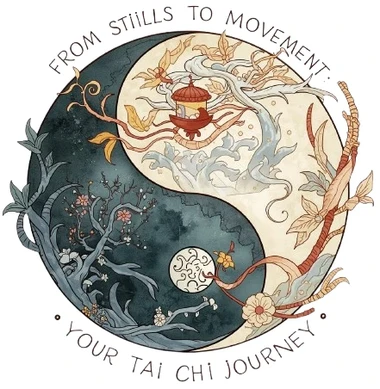In a World That Moves Too Fast, Could Stillness in Motion Be the Cure?
In a world drowning in constant noise, stress, and blue-light fatigue, what if peace came not from stillness—but from movement?
For over 1 500 years, the legendary monks of China’s Shaolin Temple have practiced a living art that fuses strength with serenity.
Today, as burnout spreads faster than any virus, this ancient discipline—Shaolin Kung Fu—offers a science-backed path to clarity, confidence, and balance in 2025.
Recent studies in the Journal of Mind-Body Medicine show that mindful movement practices like Shaolin Qigong can reduce cortisol levels by 30–35%, helping the nervous system recover from chronic stress.
At Tai Chi Wuji, we see that research in action every day. Students who arrive tense and distracted begin to breathe deeper, stand taller, and smile more within a week.
“I used to start my mornings checking emails,” laughs Master Zhang.
“Now I start with Horse Stance. My focus lasts all day.”
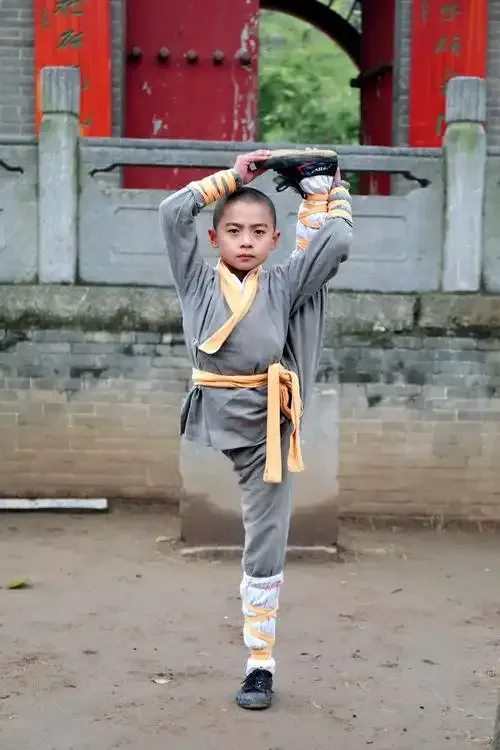
What Makes Shaolin Kung Fu So Powerful in Modern Life?
When you move through a Shaolin form, every breath, twist, and stance reconnects body and mind. It’s meditation disguised as motion—calm inside, power outside.
Shaolin Kung Fu began in 495 AD, when Emperor Xiaowen built the temple on Mount Song for an Indian monk named Batuo. Decades later, Bodhidharma introduced breathing drills to help meditating monks stay alert.
Those drills evolved into the first fighting sequences—the Luohan Eighteen Hands—a synthesis of strength, rhythm, and inner awareness.
Yet its relevance today isn’t historical nostalgia; it’s human design.
In an era of tight shoulders and racing thoughts, Shaolin’s rhythm reminds us:
Move with purpose. Breathe with awareness. Act with compassion.
Each form becomes a living mirror—showing where tension hides and how stillness can exist inside effort.
Try This: Horse Stance Micro-Practice
Stand with feet twice shoulder-width apart, knees bent, spine tall.
Hold for 10 seconds.
Feel the weight in your legs? The breath slowing?
That’s Shaolin balance awakening—strength grounded in calm.
5 Ways to Bring Shaolin Focus into Your Day
- Begin mornings in Horse Stance. Thirty seconds builds grounding for hours.
- Sync breath and motion. Inhale to open, exhale to strike.
- Keep your gaze steady. Eyes train mindfulness faster than stillness.
- End with gratitude, not performance. Progress is presence, not perfection.
- Journal weekly changes. Notice how posture and patience grow together.
Once you feel where Shaolin power begins, the next step is discovering where it truly lives—inside the unity of Chan (Zen) and movement.
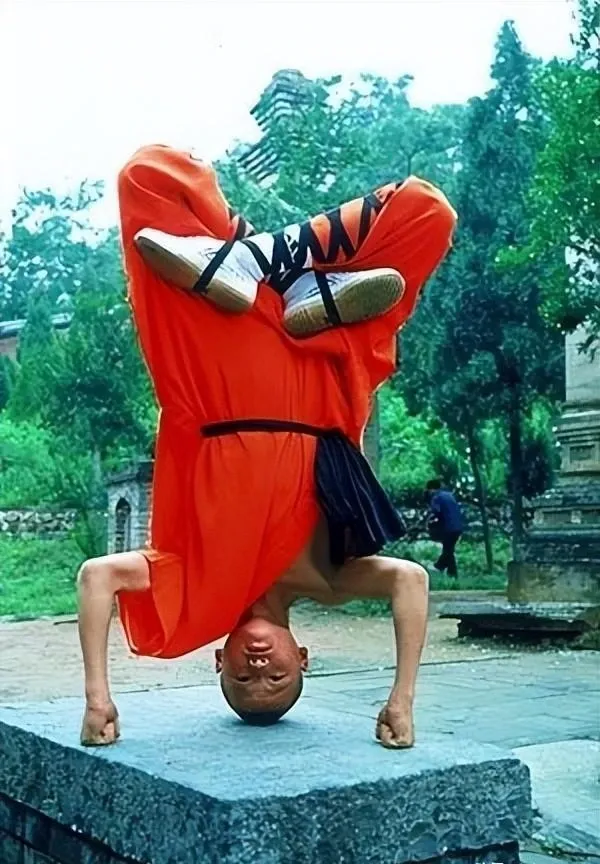
What Does “Chan Wu He Yi” Really Mean—and How Can It Transform Your Day?
At the heart of Shaolin lies three characters: 禅武合一 (Chan Wu He Yi)—the unity of Zen and martial arts. It means meditation and motion are not separate—they are one breath expressed two ways.
When Bodhidharma observed weary monks losing focus, he taught them to meditate while moving. That insight gave birth to Shaolin Kung Fu: each strike a breath, each breath a moment of awareness. Modern neuroscience now confirms it—synchronized motion and respiration increase serotonin and decrease anxiety.
At Tai Chi Wuji, beginners often notice calmer focus after a single week of mindful movement.
Their hearts beat slower, yet their energy feels higher—a paradox only Zen can explain.
“Meditation doesn’t always happen on a cushion,” says instructor Mei Lin.
“Sometimes, it happens in the middle of a punch.”
Chan Wu He Yi teaches that balance is not found by escaping motion, but by entering it consciously.
The moment breath, body, and awareness align, discipline becomes effortless.
4 Daily Practices to Feel ‘Chan Wu He Yi’
- Pause before you move. One deep breath anchors any task.
- Match inhale and exhale to action. Rhythm creates focus.
- Relax after effort. Two quiet breaths between tasks reset the nervous system.
- Turn frustration into flow. Imagine your breath as a wave that carries tension away.
Reflection: Which part of your day could transform most if you moved with awareness instead of autopilot?
At Tai Chi Wuji, hundreds have answered that question through practice—office workers, athletes, and parents alike.
They discover the same truth: when body moves mindfully, peace moves with it.
You’ve now touched the inner rhythm of Shaolin.
Next, we’ll explore how its physical forms—Shaolin Boxing and Qigong—build both the body’s strength and the mind’s stillness.
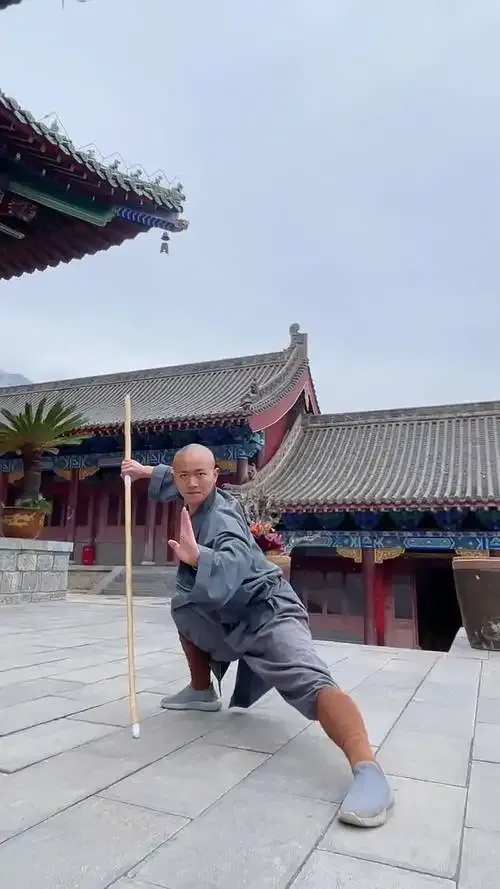
How Do Shaolin Boxing and Qigong Build Total Strength and Stillness?
When people picture Shaolin Kung Fu, they imagine cinematic leaps and flying kicks.
Inside the temple, the reality is quieter—and deeper.
The monks begin with Qigong breathing, not combat.
They know that the body cannot strike with clarity until the breath flows without fear.
Shaolin Boxing trains the outer body—structure, timing, precision.
Shaolin Qigong trains the inner energy—the invisible current that gives motion meaning.
Together they create balance: power that heals instead of harms.
Modern physiology supports this.
A 2024 review in Frontiers in Psychology found that slow, mindful movement combined with diaphragmatic breathing improves oxygen efficiency by 25 % and reduces stress reactivity [3].
That’s exactly what Shaolin Boxing and Qigong have refined for over a millennium.
At Tai Chi Wuji, new learners begin with Luohan Quan hand patterns and the “Eight Brocades” Qigong.
Within two weeks, many report better sleep and calmer focus.
“When your breath breaks, form breaks,” explains Master Hui.
“When breath flows, spirit flows.”
Each form obeys a single law: root through the legs, release the chest, move from the waist, and breathe through the movement.
It’s not choreography—it’s conversation between body and mind.
4 Steps to Balance Shaolin Boxing and Qigong
- Begin slowly. Speed hides mistakes; slowness reveals truth.
- Synchronize breath and motion. Inhale = expand ; exhale = focus.
- Alternate hard ↔ soft. Follow explosive drills with quiet Qigong recovery.
- End in stillness. Stand upright for 60 seconds; feel the pulse settle.
Mini-Challenge: Close your eyes. Take one slow exhale through the nose. Now raise your arms as if parting clouds. That’s a Qigong motion—light, precise, peaceful.
Science calls it parasympathetic activation.
Shaolin calls it harmony.
Either way, it’s medicine in motion.
If Qigong teaches inner stillness, the next practice awakens instinct—the language of animals and nature itself.
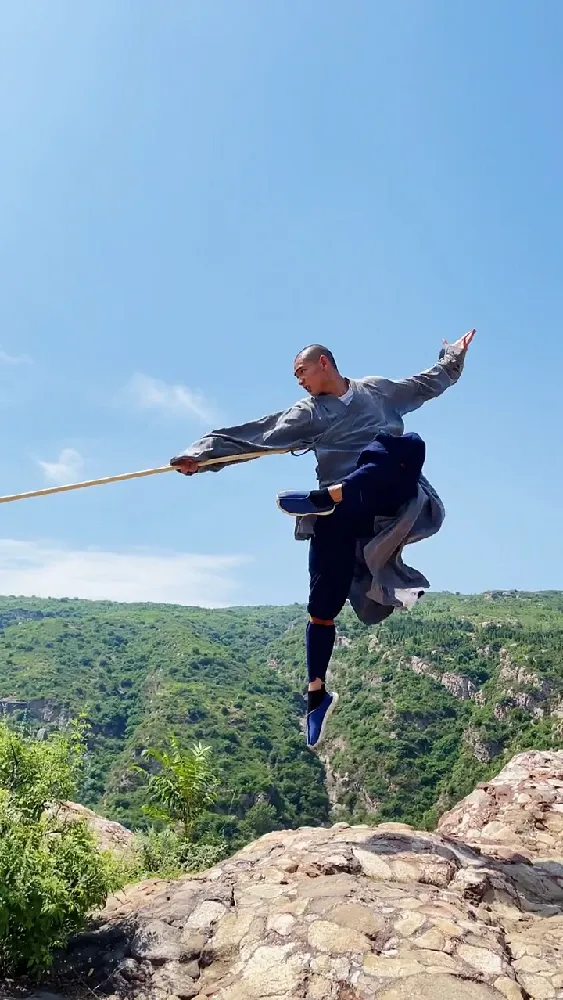
Why Do the Five Animal Fists Still Inspire Fighters and Healers Worldwide?
Among all Shaolin traditions, none spark imagination like the Five Animal Fists—Dragon, Tiger, Leopard, Snake, and Crane.
Each one mirrors a force of nature, teaching the body a physical skill and the spirit a human virtue.
- Dragon 拳 (Long Quan): spirals with imagination; builds spinal strength and creative flow.
- Tiger 拳 (Hu Quan): rooted and fearless; develops courage and muscular power.
- Leopard 拳 (Bao Quan): fast and precise; refines speed under pressure.
- Snake 拳 (She Quan): quiet and continuous; enhances sensitivity and internal Qi circulation.
- Crane 拳 (He Quan): light and poised; cultivates balance and emotional grace.
“I once taught the Crane form to an engineer who couldn’t sleep,” recalls Master Li of Tai Chi Wuji.
“Within a month, his jaw relaxed and his breathing slowed. That was the Crane’s peace.”
Physically, these forms target different systems—Tiger strengthens legs and core; Snake massages organs; Crane aligns posture.
Mentally, they remind us that adaptability is survival: sometimes fierce, sometimes still.
At Tai Chi Wuji, team sessions often weave them together—Tiger stances to awaken strength, Snake breathing to calm focus, Crane balance to end with serenity.
Students call it “meditation through motion.”
🐉 5 Steps to Practice the Five Animal Fists at Home
- Choose one animal each week. Focus on its mood rather than perfection.
- Embody intent. Tiger = bold but not angry; Crane = soft but aware.
- Match breath to form. Deep inhale = expansion; slow exhale = release.
- Finish in silence. Let energy settle before moving again.
- Reflect in a journal. Ask: What did this animal teach my mind today?
💬 Reader Reflection: Which animal mirrors your current life challenge—Tiger’s courage, Crane’s patience, or Snake’s adaptability?
Strength and gentleness aren’t opposites here—they’re partners.
That’s why both fighters and healers study these forms: they prove that to control power, you must first understand peace.
At the end of every Tai Chi Wuji Five Animals class, students bow quietly.
No trophies, no noise—just breath returning to balance.
That silence is the true applause of Shaolin Kung Fu.
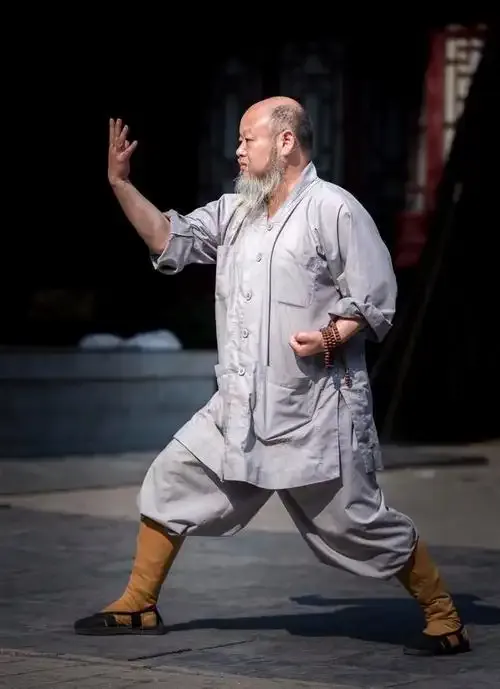
Why Is Shaolin Boxing Known for Its Hard Power — and What Is Shaolin Hard Qigong (Ying Qigong)?
If the Five Animal Fists awaken instinct and grace, Shaolin Boxing reveals the other half of the temple’s secret — raw, disciplined hard power.
This is the world of Ying Qigong (硬气功), the art of building the “Iron Body” through years of patient, mindful conditioning.
Shaolin monks call it “forging flesh into courage.”
It’s not aggression — it’s awareness so deep that even the body learns fearlessness.
In ancient days, training began at dawn.
Monks struck sandbags filled with gravel, rolled bamboo poles over shins, and held stances until sweat met silence.
Each strike taught patience; each bruise taught control.
Over time, pain became information — a signal, not an enemy.
“Softness gives control, but hardness gives confidence,” explains Master Zhang of Tai Chi Wuji.
“A Shaolin warrior needs both.”
The Three Pillars of Shaolin Hard Qigong (硬气功)
- Iron Shirt (铁布衫): Toughens the body’s surface and builds internal Qi pressure to absorb impact.
- Iron Palm (铁砂掌): Develops explosive striking power through gradual conditioning and Qi focus.
- Golden Bell Cover (金钟罩): Advanced breath training to strengthen internal organs and energy protection.
Modern sports science now validates what monks discovered through centuries of discipline.
A 2022 study in Sports Medicine China found that Shaolin tendon conditioning significantly increases bone density and collagen strength [7].
Another, published in Frontiers in Human Physiology, reported that rhythmic impact drills enhance neuromuscular coordination and pain tolerance.
At Tai Chi Wuji, we combine ancient principles with modern physiology.
Beginners start with safe versions — bamboo tapping, wall punching, controlled breathwork.
The goal isn’t pain, but awareness.
“Hard Qigong doesn’t make you violent,” says instructor Mei Lin.
“It makes you unshakable.”
4 Steps to Begin Hard Qigong Training Safely
- Warm up with breath. Inhale through the nose, exhale through slightly clenched teeth to focus Qi.
- Condition gradually. Tap arms and legs with a soft stick or palm 30 seconds each day.
- Sync breath with impact. Exhale on contact; this releases tension and protects internal organs.
- End with soft Qigong. Always balance hardness with calm breathing to restore Qi flow.
Try This:
Tense your abdomen gently, place your palm over it, and breathe deeply.
On each exhale, feel your hand vibrate slightly — that’s external Qi meeting internal awareness.
Hard Qigong is the bridge between power and peace.
It turns raw effort into refined energy, fear into focus.
It reminds us that strength and softness are not opposites — they are partners in mastery.
At Tai Chi Wuji, advanced students often combine Hard Qigong with meditation and Shaolin Boxing drills like Xiao Hong Quan or Da Hong Quan.
The result is power that feels effortless — the kind that can break a board, but more importantly, break a habit.
“The fist may harden,” says Master Hui,
“but the heart must always stay soft.”
That is the true meaning of Shaolin hard training:
Unbreakable outside, unshakable inside.
Once the body is forged and awareness refined, Shaolin training continues through weapons —
none more revered than the staff, the temple’s symbol of discipline and compassion.
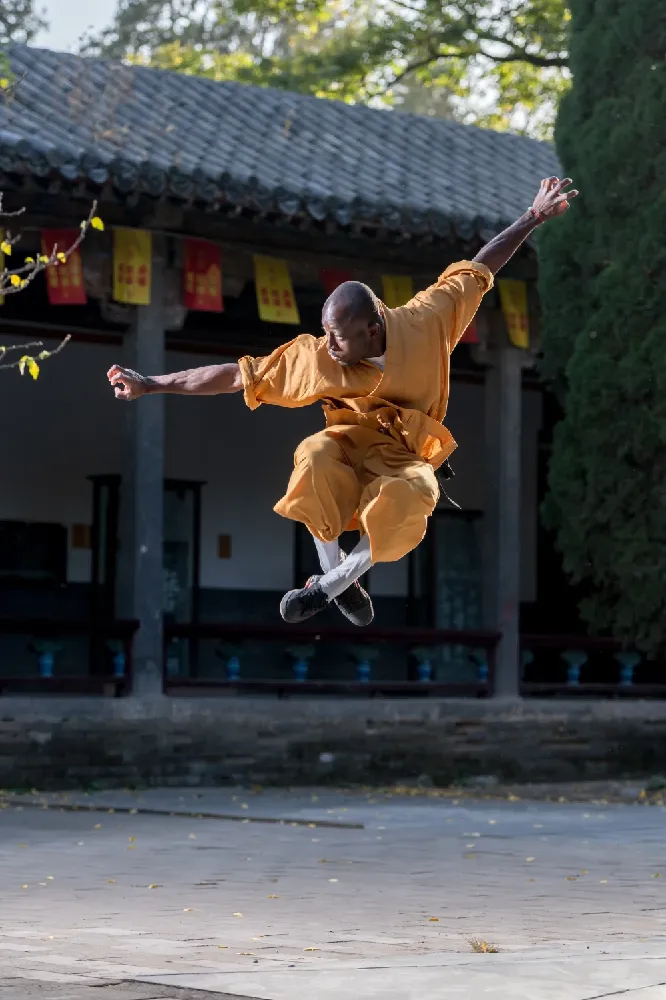
Why Is the Staff Called “The Father of All Weapons” in Shaolin Kung Fu?
Among the legendary Eighteen Weapons of Shaolin, one holds a sacred title—
the staff (棍, gun), known as “the Father of All Weapons.”
To outsiders it’s a stick; to a monk it’s a lifetime teacher.
The staff teaches coordination before power, patience before victory.
Every rotation exposes imbalance, every strike mirrors your focus.
That is why the monks say, “To train the staff is to train your mind.”
Historically, monks used staffs to defend travelers along the steep passes of Songshan Mountain.
Light enough to spare life, strong enough to stop violence—it became a symbol of compassion in motion.
At Tai Chi Wuji, staff practice remains a core module.
Beginners wobble, over-rotate, sometimes drop it—but within weeks, motion becomes meditation.
“At first, I kept hitting my own foot,” jokes instructor Mei Lin.
“Then I realized — it’s not about hitting anything; it’s about listening to the breath between strikes.”
Modern kinesiology confirms the benefits: circular staff swings enhance shoulder mobility, spinal rotation, and neuromuscular timing [4].
The old masters already knew—flow > force.
5 Steps to Train the Shaolin Staff Mindfully
- Start with grip and stance. Hold each end lightly; practice slow figure-eights for one minute.
- Root your base. Bend knees slightly; let feet anchor you to the ground.
- Breathe with movement. Inhale to raise; exhale to strike or sweep.
- Listen for airflow. A clean “whoosh” means alignment.
- End in stillness. Staff upright, spine tall, eyes soft — one minute of calm.
Try This: Stand up now, grip a broom handle, and move it in a circle slowly.
Notice how the mind must quiet to keep balance—that’s Shaolin attention training.
At Tai Chi Wuji, students often call it “meditation on a stick.”
They sweat, laugh, then leave with lighter shoulders and calmer hearts—proof that ancient tools still teach modern clarity.
What Can We Learn from the Shaolin Moral Code — Wude — in Everyday Life?
Every Shaolin session begins and ends with a bow.
That gesture embodies Wude (武德) — the moral virtue of the martial path.
Wude translates as “the virtue of martial conduct.”
It originates from five Buddhist principles: compassion, humility, truth, restraint, and respect.
In the temple, technique without virtue was considered hollow.
In modern life, it means discipline without kindness breeds burnout.
At Tai Chi Wuji, classes begin with thirty seconds of silence.
Students set intention: to train not for ego, but for awareness.
One night, a student asked Master Zhang why he never yelled during sparring.
He smiled: “When you shout, you lose twice—your breath and your calm.”
Wude extends beyond martial practice.
It guides how we respond to stress, how we treat colleagues, how we carry ourselves when no one is watching.
4 Ways to Practice Wude Beyond Training
- Pause before reacting. A single breath can turn anger into awareness.
- Offer help quietly. Kindness without credit is true strength.
- Respect opponents and critics. They reveal your impatience.
- Reflect daily. Ask, “Did my strength create peace today?”
Reflection: When was the last time you used calm instead of force to solve a problem?
Modern culture rewards speed and volume, but Shaolin teaches the opposite: real power is quiet and precise.
You train the body to control force, and the mind to control ego.
At Tai Chi Wuji, each session closes with the phrase:
“Power is temporary. Character is forever.”
That’s the essence of Wude—courage without cruelty, discipline without domination.
And it’s why Shaolin Kung Fu continues to thrive in 2025—not as nostalgia, but as a living lesson in how to stay strong and gentle at once.
Wude tells us how to act; history tells us why it matters.
Next comes the story of how Shaolin Kung Fu shaped China’s identity and how its revival continues to unite cultures worldwide.
How Did Shaolin Kung Fu Shape Chinese History and National Identity?
Across centuries of change, Shaolin Kung Fu has been more than a fighting system; it has been a mirror of Chinese resilience.
During the Tang dynasty, thirteen Shaolin monks aided the future Emperor Li Shimin in battle.
Their loyalty helped unify the empire, earning Shaolin the title “The Monastery of Heroes.”
From that moment, martial virtue became part of China’s cultural DNA.
When coastal villages were threatened by pirates during the Ming dynasty, Shaolin monks again stood to protect civilians.
Armed with staffs and moral clarity, they demonstrated that strength guided by compassion is the truest defense.
Through each era—Tang, Ming, Qing—the temple remained a symbol of discipline and service.
It showed the world that martial arts could express patriotism without violence, courage without conquest.
At Tai Chi Wuji, we teach that same principle for modern citizens.
Being a “Shaolin protector” today might mean safeguarding mental health, helping coworkers, or creating calm in chaos.
“A true martial artist doesn’t seek enemies,” says Master Zhang.
“They create safety wherever they stand.”
5 Ways to Apply Shaolin Discipline in Modern Life
- Begin each morning upright. Posture is silent confidence.
- Keep promises, even small ones. Integrity builds invisible armor.
- Act quietly. Results speak louder than reaction.
- Protect someone weaker. Service is today’s heroism.
- Study your roots. Understanding history gives purpose to movement.
Try this: Read one page about Tang history tonight.
Imagine those monks choosing compassion over fear—that same courage lives in every deliberate breath you take.
Bridge:
History shaped Shaolin’s spirit, but its rebirth in modern times proves its timelessness.
From temples to theaters to online classrooms, the Shaolin revival continues to bridge East and West.
What Sparked the Modern Revival of Shaolin Kung Fu—and Why Does It Keep Growing Worldwide?
After centuries of turbulence, the Shaolin Temple lay in ruins more than once.
Yet like bamboo after winter, it returned stronger.
The modern revival began in the early 1980s with the film Shaolin Temple, which introduced the art to millions and ignited a global fascination.
Audiences weren’t just watching acrobatics—they were witnessing philosophy in motion.
Behind each leap was a message: discipline + compassion = balance.
By 2006, China recognized Shaolin Kung Fu as a National Intangible Cultural Heritage.
Soon, temples and cultural centers emerged on every continent.
Today, there are hundreds of Shaolin and Tai Chi Wuji schools teaching this heritage through both tradition and technology.
“People come for the power,” smiles instructor Mei Lin,
“but they stay for the peace.”
At Tai Chi Wuji, online programs bring Songshan’s legacy to living rooms worldwide.
Office workers stretch beside students in Nairobi; parents in Toronto share virtual bows with monks in Henan.
Every session proves that the world can move in one rhythm when guided by mindfulness.
A 2023 study in the Journal of Human Kinetics found that consistent Shaolin training improves cardiovascular endurance, joint flexibility, and emotional stability across all age groups [5].
It’s physical fitness fused with philosophy—a 1 500-year wellness technology reborn for the digital era.
5 Steps to Experience the Shaolin Revival Yourself
- Start local or online. Join a certified Shaolin or Tai Chi Wuji class.
- Watch classic Shaolin films mindfully. Notice the patience between strikes.
- Train ten minutes daily. Consistency beats intensity.
- Share progress with others. Teaching strengthens memory and humility.
- Visit Songshan or Dengfeng if possible. Stand where it all began.
💬 Reflection:
What part of this global story could you join—not as a spectator, but as a participant?
Shaolin’s worldwide rise proves a simple truth: authentic traditions adapt, not disappear.
Each new learner—from London to Lima—adds a fresh verse to a 15-century poem still being written.
Through Tai Chi Wuji’s cross-cultural programs, that poem now includes thousands of voices.
It sings of focus, respect, and renewal—a universal language stronger than any border.
“The old paths aren’t lost,” says Master Zhang.
“They’re waiting for us to walk them again—with wiser feet.”
The Shaolin revival shows how movement unites nations; now we return to the individual—
to the Shaolin spirit that anchors modern life in strength, balance, and compassion.
How Has Shaolin Kung Fu Become a Global Cultural Bridge?
From the misted peaks of Songshan Temple to city rooftops in London and community gyms in Nairobi, Shaolin Kung Fu has become a language that needs no translation.
It’s more than martial technique — it’s embodied philosophy, and that’s why it connects people across continents.
The heart of Shaolin is Chan (Zen) philosophy: respect, awareness, and harmony through movement.
When a monk in Henan bows before practice, and a student in Brazil mirrors that gesture through an online Tai Chi Wuji class, they’re already sharing a single, silent sentence — I move with mindfulness.
In a time when the world can feel divided, Shaolin creates connection through rhythm, not rhetoric.
A bow replaces an argument.
A shared breath replaces misunderstanding.
At Tai Chi Wuji, global classes show this every day.
Students from over 30 countries log in, exchange smiles, and train together.
They may never meet in person, yet for that one hour, they breathe the same tempo.
“In one of our live sessions,” recalls Master Zhang,
“I saw a student in Dubai bow to another in São Paulo.
No words. Just shared rhythm — that’s true Shaolin diplomacy.”
It’s no coincidence that cultural programs featuring Shaolin monks now tour the world.
Their exhibitions blend art, athleticism, and moral clarity.
Each performance whispers the same message:
Discipline is universal. Compassion is strength.
5 Ways to Build Connection Through Shaolin Practice
- Learn a shared form. Try Xiao Hong Quan and exchange practice videos with friends abroad.
- Join an online Tai Chi Wuji class. Train beside practitioners from different time zones — harmony across borders.
- Read a Chan quote each morning. It keeps perspective steady amid global noise.
- Start a “movement exchange.” Invite colleagues to learn one stance together weekly.
- Host a mini Shaolin Day. Share the culture, stories, and humility behind the art.
Reflection:
What would the world look like if every culture practiced one minute of mindfulness before speaking?
Shaolin Kung Fu’s global reach shows that peace isn’t passive — it’s practiced.
And in every corner of the world where a student bows with intent, the temple lives again.
What Does the Shaolin Spirit Teach Us About Strength, Balance, and Modern Life?
Modern life rewards noise, speed, and endless scrolling.
The Shaolin spirit quietly teaches the opposite: slow down, breathe deeply, move with purpose.
Strength is not about domination — it’s about direction.
Balance isn’t about stillness — it’s about stability in motion.
At Tai Chi Wuji, instructors often say,
“Shaolin doesn’t change your world; it changes how you move through it.”
Each stance roots your focus.
Each punch releases tension.
Each breath returns the mind to now.
And science agrees.
According to a 2024 Harvard Medical Review meta-study, mindful physical routines like Qigong and Tai Chi improve mood and cognitive clarity by up to 40 %. What Bodhidharma discovered through stillness, modern neurology now measures with data.
4 Daily Practices to Live the Shaolin Way
- Morning grounding: before checking messages, stand tall and take three calm breaths.
- One minute of Horse Stance: 30 seconds is strength, the next 30 is awareness.
- Replace one complaint with gratitude. Gratitude sharpens focus faster than caffeine.
- Evening stillness: Sit quietly, notice breath lengthen, release the day.
Mini Challenge:
Do any one of these right now.
See how one minute of awareness changes your entire mood.
At Tai Chi Wuji, beginners are often surprised by how fast this wisdom translates to daily life:
They respond to stress slower, listen deeper, and walk lighter.
“The older I get,” says instructor Mei Lin, “the slower I move — but the faster I find peace.”
💡 A Gentle Reminder Before You Go
Some say traditional martial arts are outdated — too slow for modern fitness.
But Shaolin Kung Fu isn’t old; it’s eternal.
Its value doesn’t fade because its goal never changes: to make humans whole again.
Every time you practice a stance, every mindful breath, you continue a 1 500-year dialogue between body and soul.
You prove that strength can be gentle, and stillness can be powerful.
At Tai Chi Wuji, we see it daily — busy professionals finding calm in five minutes, children learning focus through form, elders regaining posture through Qigong.
Shaolin’s rhythm still beats in modern hearts.
“Power without compassion is chaos,” teaches Master Zhang.
“Compassion without strength is fragile.
Balance both — and you are free.”
Shaolin Kung Fu began as a temple discipline and became a global philosophy.
Now, as stress defines our age, its lessons feel not ancient, but urgent.
Let’s close with how you can begin your journey today — and how Tai Chi Wuji carries this legacy forward.
Conclusion — Ancient Motion for the Modern Mind
In every century, humans have searched for balance.
In 2025, Shaolin Kung Fu stands as both ancient answer and modern antidote — a living system that teaches the art of moving well, breathing well, and living well.
You don’t need to climb Songshan Mountain or shave your head.
You just need five minutes of mindful motion — the same rhythm monks have used for 1,500 years to quiet the storm inside.
At Tai Chi Wuji, we see this transformation daily:
busy parents reclaiming calm, students finding confidence, professionals recovering focus.
Each story begins the same way — with a single breath and the decision to begin.
“It’s not about perfect form,” says Master Zhang.
“It’s about perfect presence.”
Shaolin Kung Fu endures because it adapts.
Its stances fit modern offices; its meditation fits modern chaos.
Its lessons about compassion and balance are universal: the stronger you grow inside, the gentler you become outside.
So if you’ve ever thought, “Maybe I’m too busy for stillness,” remember this:
You don’t practice Shaolin to escape life — you practice it to experience it more clearly.
Start Your Shaolin Journey with Tai Chi Wuji — Today
💪 Reclaim your focus.
🧘♀️ Balance your energy.
❤️ Train with purpose.
👉 Visit Tai Chi Wuji Online
to begin your 7-day free Shaolin trial.
Learn directly from Songshan-trained masters in live global sessions.
Build strength that feels peaceful and peace that feels powerful.
Every movement you learn will echo centuries of wisdom —
and each breath you take will join a tradition that has never stopped moving forward.
Because Shaolin Kung Fu isn’t just history.
It’s a heartbeat that continues wherever awareness lives.
“The old paths aren’t gone,” says Master Zhang.
“They’re waiting for you to walk them — with wiser feet.”
Frequently Asked Questions (FAQ)
What makes Shaolin Kung Fu unique compared to other martial arts?
Shaolin Kung Fu unites Chan (Zen) philosophy with martial precision and ethical discipline (Wude). It trains strength guided by compassion, balance through breath, and awareness through action — making it a complete mind-body path.
Can beginners really learn Shaolin Kung Fu online?
Absolutely. Tai Chi Wuji’s step-by-step programs and live classes are designed for all levels. Beginners can safely learn Shaolin stances, breathing, and forms from anywhere, guided by Songshan-certified instructors.
How does Shaolin Kung Fu help with stress and focus?
Each movement links body and breath, activating the body’s relaxation response. Studies show mindful motion reduces cortisol and improves mental clarity by up to 35%. Shaolin turns stress into strength — one breath at a time.
